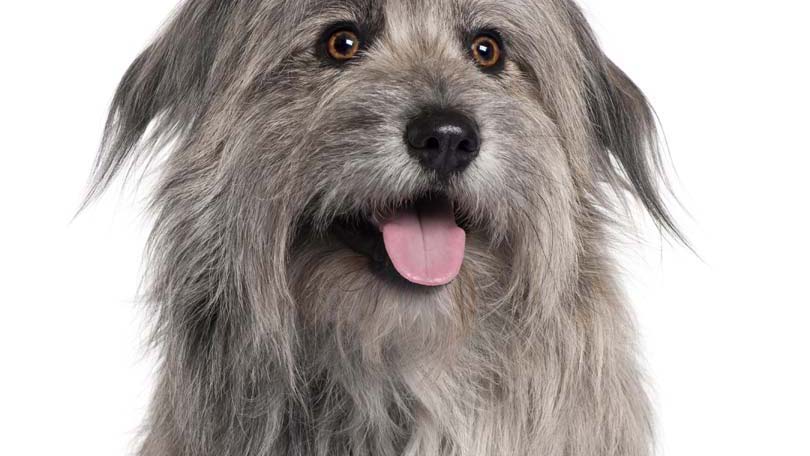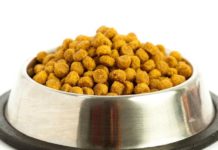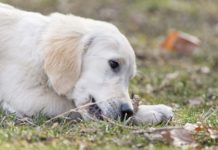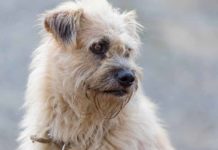
Brushing is an important part of dog ownership. Regardless of your pets’ breed and coat type, regular brushing not only promotes good skin and coat health, but also helps you to build a stronger relationship with your pet. Frequency of brushing varies greatly between breeds and individual dogs, and how often you should brush your pet may depend on the needs of your own dog.
Brushing has many health benefits to your dog. Regular brushing of all dogs, despite coat length or type, helps to keep the coat and skin healthy. Most dogs do not require frequent bathing (once a month or less!), but brushing in between bath times helps to keep them clean, removing dead hair, dirt and other debris from the coat. Brushing also works to distribute the natural oils of the skin throughout the coat, promoting a healthier coat, and cleaner skin.
In addition the direct benefits to the dogs coat, brushing can help you become more accustomed to your dogs body. While you may not notice any lumps or bumps that have appeared on your dog, regular grooming can insure that if a lump does appear, you are aware of it sooner rather than later. A veterinarian should check any growth or lump you notice on your pet, to rule out cancer and other potentially dangerous conditions. Early detection can be crucial in a positive outcome to an otherwise deadly health scare.
In daily life with your pet, chances are you don’t routinely check in his ears, look at his teeth or check under his belly. With frequent, thorough brushing, you can routinely check these areas for signs of infection or other problems, and address them before they become uncomfortable for your dog.
While all dogs should be brushed at least twice a week, dogs with certain types of coats or lifestyles may daily brushing in order to ensure their coats remain tangle free, and clear of debris, dead hair and dirt.
There are six basic types of coats on dogs, each with it’s own specific requirements. How often you should brush your dog depends on which of the following categories he best fits into:
Smooth Coated dogs, such as Labradors, short hair Chihuahuas, and short hair Dachshunds are the easiest type of coat to maintain. These dogs shed constantly though, and routine brushing with a soft brush can help to reduce excess hair.
Curly coated dogs, such as Poodles, Bichon Frise, and Kerry Blue Terriers, have non-shedding coats that should be bathed and clipped about every 8 weeks. Between clippings, the longer the hair, the more it may become tangled, as the coat is very soft and whispy. Daily brushing towards the end of the clipping cycle may be required.
Short Coated Dogs, such as Corgis, German Shepherds and Jack Russell’s, have coats that are short, but extremely thick. These dogs shed, and often the dead hair becomes trapped within the rest of the coat, requiring frequent thinning and raking of the coat. These dogs should be brushed at least twice a week, more during seasonal sheds.
Wiry coated dogs, such as Australian Terriers and Carin Terriers, have stiff, wiry coats that can shed, and requires frequent grooming to prevent matting.
Long coated dogs, such as Shih Tzus, Maltese and Lhasa Apsos have a dual coat of long, straight human like hair, with an undercoat of thick, cottony hair. These breeds do not tend to shed, but left long, the coat can very quickly become matted, and a magnet for dirt, foxtails, branches and all other types of outdoor material to become tangled within it. Daily brushing is required for these dogs, as well as regular trimming around the face and ears for health and hygiene. Clipping these types of dogs short is a popular alternative, and cuts down on grooming needs.
Silky coated dogs, like Collies, Shelties and Afghan Hounds, are the hardest type of coat to maintain, and require daily attention. These dogs shed a thick undercoat, which easily mats into their long outer hair, creating a constant grooming need. Daily brushing with a slicker brush and rake, as well as strategic clipping, is required to keep these dogs coats in good shape.
There are a plethora of types of brushes available for your dog, and in long hair dogs a variety of tools may be needed.
The slicker brush is one of the most commonly used brushes for long-hair dogs. Rows of tiny, bent wire teeth are set close together, and help remove mats and dead hair from within the coat of dogs. Slicker brushes are useful in shedding breeds, when a large amount of coat needs to come out, such as with short-coated dog, and silky coated dogs.
Pin brushes, the type that many people use on their own hair, work best for long coated dogs to brush out and prevent tangles, as well as in silky coated dogs once the undercoat has been thinned.
Grooming rakes have metal teeth with blades on the inside, and are effective for dogs needing to have lots of dead undercoat removed, or cut through tangles. Rakes should be used with caution, as the metal can injure the skin if used too vigorously, and even break the skin with misuse.
Short-coated dogs are best suited to a bristle brush, with softer bristles as to not injure the skin under the short coat.
In addition to brushes, there are a variety of combs and other products that can help to most effectively brush your pet. When looking for the right tools, consult your groomer or local pet store to help find the appropriate match for your dog.
Regular brushing is an important part of dog ownership that will keep your dog looking and feeling his best, while also promoting a strong bond between you. How often you should brush your pet may vary- but the positive outcome never will.





